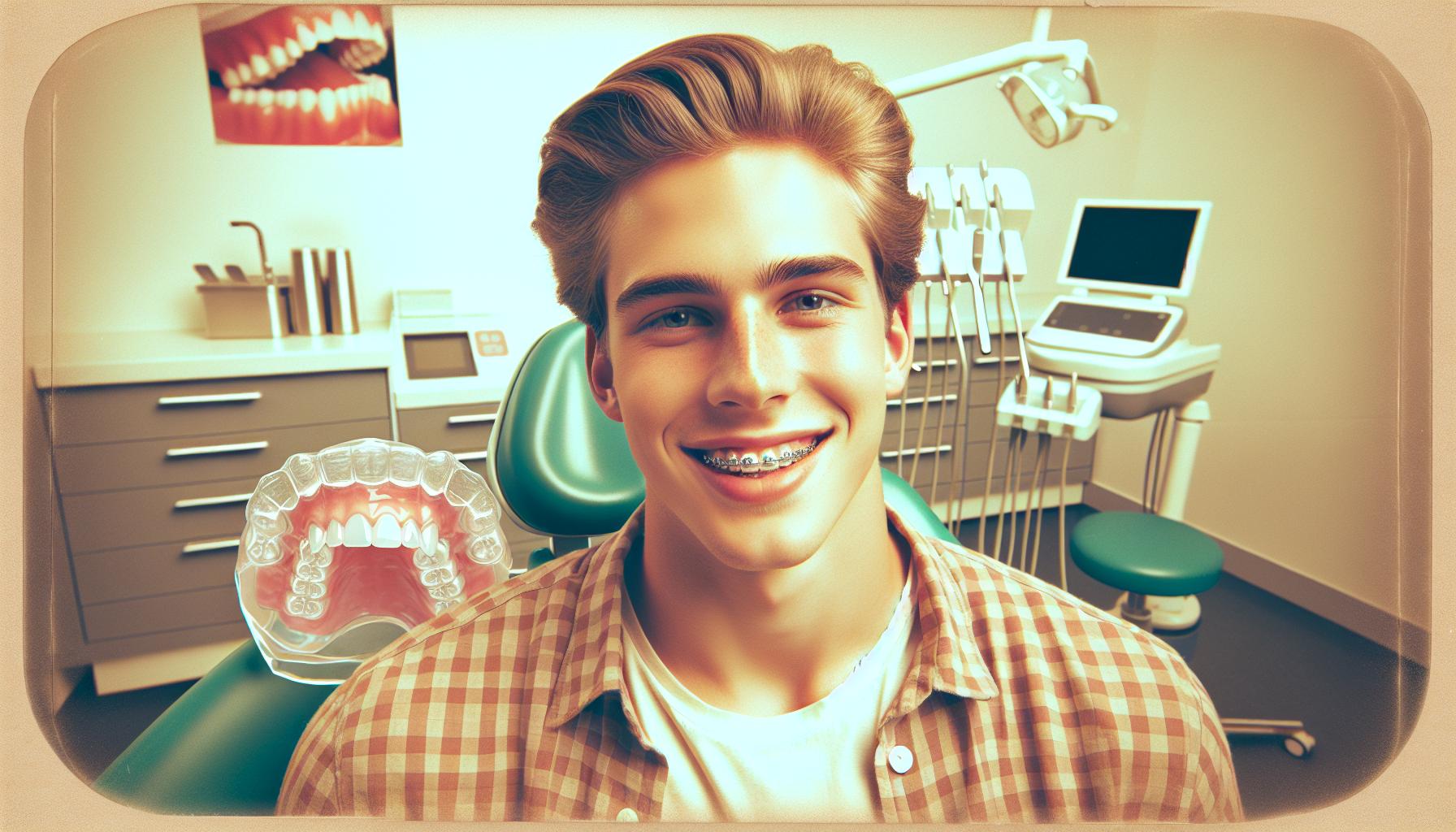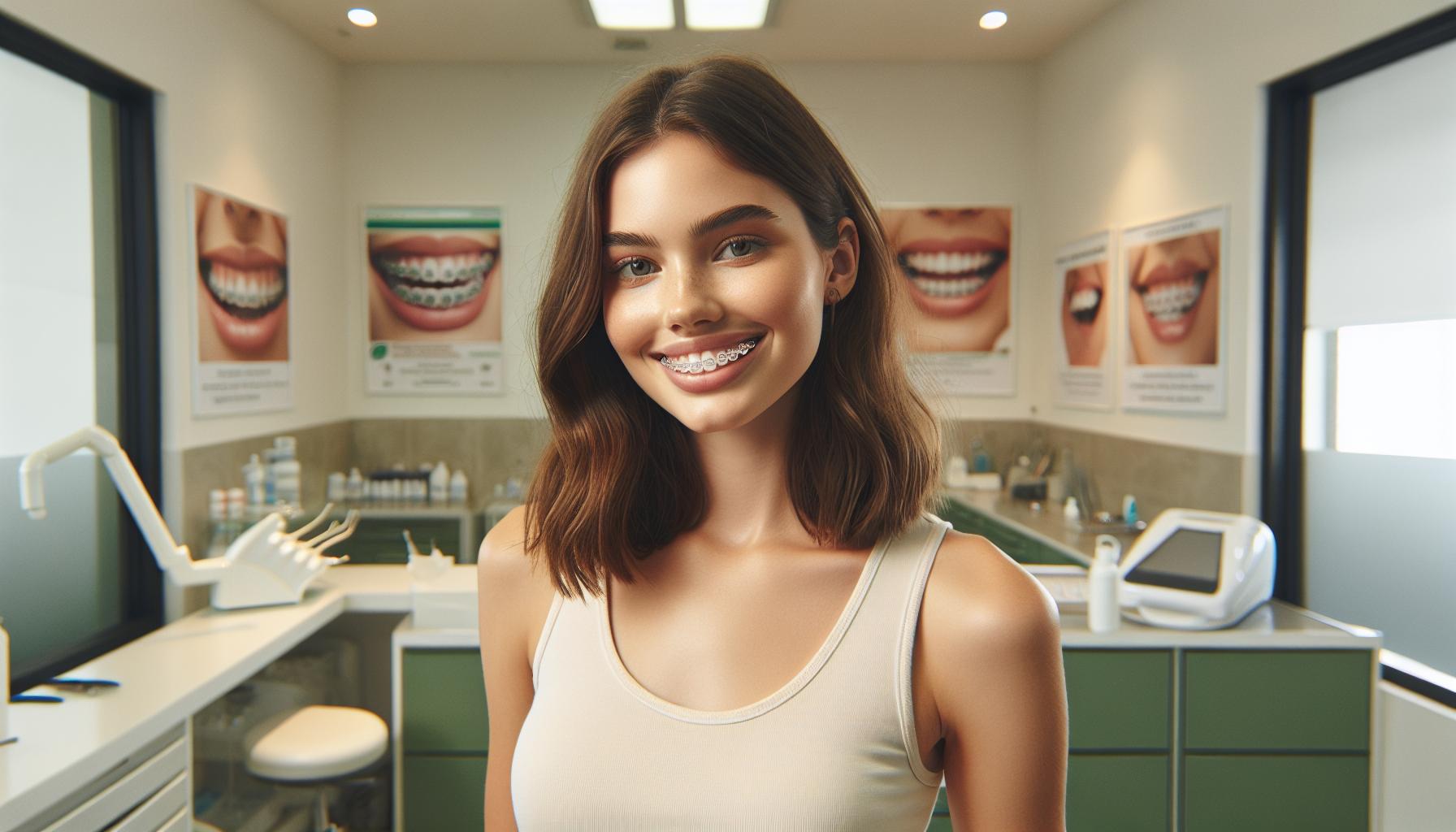An overbite can impact not just a person’s smile but also their overall dental health. Many wonder if Invisalign, the popular clear aligner system, can effectively address this common issue. This article explores how Invisalign works, its effectiveness in correcting overbites, and what one can expect during the treatment process.
Understanding Overbites
An overbite, a common dental condition, occurs when the upper front teeth overlap significantly over the lower front teeth. This misalignment can lead to various dental and health issues.
What Is An Overbite?
An overbite refers to the extent of overlap between the upper and lower teeth, primarily involving the incisors. It plays a crucial role in proper bite function. Normal overbites measure around 2-4 millimetres, while excessive overbites can lead to discomfort and dental complications.
Types Of Overbites
Overbites fall into two main categories:
- Class I Overbite: This form displays slight to moderate overlap and typically does not require extensive correction. Often, it does not affect the function significantly.
- Class II Overbite: This type shows a significant overlap, causing issues like tooth wear, jaw pain, and difficulty in chewing. Treatment for Class II overbites often necessitates orthodontic intervention.
Understanding the type of overbite is essential for determining the appropriate treatment plan, including the potential effectiveness of solutions such as Invisalign.
How Invisalign Works

Invisalign consists of a series of custom-made, clear aligners designed to gradually shift teeth into the desired position. Each aligner is worn for approximately two weeks before transitioning to the next in the series. The total duration of treatment varies depending on the severity of the overbite and individual response to the aligners. At Radiant Smiles Dental Care, Invisalign treatments are carefully tailored to each patient’s specific needs, ensuring optimal results for those looking to correct overbites.
The Invisalign Process
- Initial Consultation: A dental professional evaluates the patient’s overbite and takes digital scans to create a treatment plan.
- Custom Treatment Plan: Based on the scans, a 3D model shows the predicted movement of teeth, enabling precise aligner design.
- Aligner Production: The laboratory creates a series of aligners tailored to the patient’s unique dental structure.
- Wearing Aligners: Patients wear the aligners for 20-22 hours daily, removing them only for eating, drinking, brushing, and flossing.
- Regular Check-ups: Follow-up appointments every six to eight weeks allow the dental professional to monitor progress and make adjustments as necessary.
Benefits Of Invisalign
- Aesthetic Appeal: Clear aligners offer a discreet orthodontic solution, making them preferable for many individuals.
- Comfort: Smooth plastic aligners reduce irritation often associated with traditional metal braces.
- Removable: Aligners can be taken out for eating and cleaning, promoting good oral hygiene.
- Predictable Results: Advanced technology provides a visual representation of expected outcomes, enhancing treatment confidence.
- Fewer Appointments: Patients typically require fewer visits to the dental practice compared to traditional braces, saving time.
Invisalign serves as an effective method for addressing overbites, enhancing both dental alignment and overall oral health.
Can Invisalign Fix An Overbite?
Invisalign is effective in correcting overbites, depending on their severity and classification. This clear aligner system offers a discreet alternative to traditional braces for addressing dental alignment issues.
Cases Suitable For Invisalign
Invisalign can treat mild to moderate overbites, particularly Class I and some Class II cases. Specific instances include:
- Class I Overbite: Minimal correction needed, Invisalign typically achieves favourable results.
- Moderate Class II Overbite: May benefit from Invisalign with careful planning and monitoring.
- Mild Crowding: Invisalign can also effectively address mild overcrowding while correcting the overbite.
- Non-complex Cases: Patients without additional significant dental problems, such as extreme tooth misalignment or jaw issues, often see successful outcomes.
Limitations Of Invisalign
Invisalign presents limitations for certain overbite cases, particularly:
- Severe Overbites: Class II cases with significant overlap may require additional orthodontic treatment alongside Invisalign.
- Complex Dental Issues: Malocclusions or significant jaw alignment problems often necessitate a more comprehensive orthodontic approach.
- Compliance Requirement: Patients must wear aligners for 20-22 hours daily for optimal results, which may be challenging for some individuals.
- Treatment Duration Variability: Certain cases may extend the treatment timeline beyond what is typical for Invisalign.
Invisalign functions as a viable solution for many individuals with overbites, but factors such as the type of overbite and patient commitment to the treatment significantly influence results.
Comparing Invisalign With Traditional Braces
Invisalign and traditional braces serve the common goal of correcting dental misalignments, including overbites. Each method has distinct features worth comparing.
Effectiveness
Invisalign effectively addresses mild to moderate overbites, especially Class I and select Class II types. Clear aligners apply gentle pressure to teeth, gradually shifting them into proper alignment. Traditional braces use brackets and wires, providing more control for complex cases. While Invisalign suits a majority of patients, severe overbites may necessitate traditional braces to achieve optimal results.
Treatment Duration
Invisalign treatment typically spans 12 to 18 months, depending on the complexity of the case. Each aligner is worn for about two weeks before moving to the next. Comparatively, traditional braces often require a treatment duration of 18 to 36 months, allowing for more gradual adjustments. Patients must consider their treatment goals and preferences when evaluating the duration of each method.
Patient Experiences And Testimonials
Patient experiences with Invisalign reveal a range of outcomes concerning overbite correction. Many individuals share positive transformations and enhanced confidence following treatment.
Success Stories
- John’s Journey: John experienced a significant Class II overbite. After 15 months of using Invisalign, he noticed considerable improvement in his bite and smiles. He emphasised the convenience of removable aligners during meals.
- Emma’s Progress: Emma, with a mild overbite, achieved her desired results in just 12 months. She appreciated the clear aligners, which allowed her to maintain aesthetic enjoyment during her school years.
- Sophia’s Satisfaction: Sophia initially faced scepticism about Invisalign‘s effectiveness on her overbite. After completing the treatment, she reported improved dental alignment and no longer dealt with jaw pain.
Challenges Faced
- Compliance Issues: Some patients struggle with wearing aligners for 20-22 hours a day, impacting treatment duration and effectiveness. Consistency is vital for optimal results.
- Adjustment Period: Individuals often face an adjustment period when transitioning to aligners. Initial discomfort can deter adherence for some.
- Complex Cases: Patients with severe overbites occasionally find Invisalign insufficient for achieving desired results alone. Additional orthodontic measures may be necessary for complete correction.
Patient testimonials illustrate both the successes and challenges associated with Invisalign treatment, highlighting the importance of tailored approaches based on individual needs.
Conclusion
Invisalign presents a viable option for individuals seeking to correct mild to moderate overbites. Its clear aligners offer a discreet and comfortable alternative to traditional braces. With a tailored treatment plan and regular monitoring, many patients experience significant improvements in their dental alignment and overall oral health.
However it’s essential to recognise that the effectiveness of Invisalign can vary based on the specific type of overbite and the patient’s adherence to the treatment guidelines. For those with severe cases, additional orthodontic interventions may be necessary. Ultimately, consulting with an orthodontic professional will help determine the best course of action for achieving optimal results with Invisalign.
Frequently Asked Questions
What is an overbite?
An overbite is a dental condition where the upper front teeth significantly overlap the lower front teeth. This can lead to various dental and health issues, including tooth wear, jaw pain, and difficulty in chewing.
How does Invisalign work to correct overbites?
Invisalign consists of a series of custom-made, clear aligners that are designed to gradually shift teeth into the desired position. Each aligner is worn for about two weeks, and the treatment duration varies based on the severity of the overbite.
What types of overbites are treatable with Invisalign?
Invisalign is most effective for mild to moderate overbites, particularly Class I and some Class II cases. Severe overbites may require additional orthodontic treatment for optimal correction.
How long does Invisalign treatment typically take?
The Invisalign treatment usually lasts between 12 to 18 months, depending on the complexity of the overbite and the individual’s response to the aligners.
What are the benefits of using Invisalign?
Invisalign offers several benefits, including aesthetic appeal, comfort, removability for eating and cleaning, predictable results through advanced technology, and fewer required appointments compared to traditional braces.
What challenges might patients face with Invisalign?
Patients may encounter challenges such as compliance with wearing aligners for 20-22 hours daily, the adjustment period to new aligners, and potential extended treatment times for complex cases.
How does Invisalign compare to traditional braces?
While both Invisalign and traditional braces aim to correct dental misalignments, traditional braces provide more control for complex cases. Invisalign is often preferred for its aesthetics and comfort, but braces may be necessary for severe overbites.
What is the role of patient compliance in Invisalign treatment?
Patient compliance is crucial for the effectiveness of Invisalign. Aligners must be worn for 20-22 hours daily to achieve the desired results and maintain the treatment schedule.
Can I eat and drink with Invisalign aligners on?
It is recommended to remove Invisalign aligners when eating and drinking, except for water. This helps prevent stains and maintain oral hygiene throughout the treatment process.
